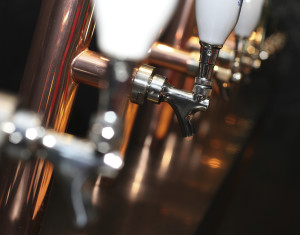 Draught drawing systems are not hard to understand, but it does take some amount of knowledge to know how they work. The better you know how your system works, the quicker you will recognize problems and even be able to anticipate some of them. Beer lines require a balance between carbonation, pressure, and resistance. It’s important to get that balance right in order to result in the best possible tap beer. You can read part one and part two for more information about the four key components and achieving balance.
Draught drawing systems are not hard to understand, but it does take some amount of knowledge to know how they work. The better you know how your system works, the quicker you will recognize problems and even be able to anticipate some of them. Beer lines require a balance between carbonation, pressure, and resistance. It’s important to get that balance right in order to result in the best possible tap beer. You can read part one and part two for more information about the four key components and achieving balance.
Mixed Gas (rewrite compared with original website)
The mix of carbon dioxide and nitrogen gasses for dispensing draft beer is a popular practice at modern bars and pubs. Some beers like Guinness require a CO2 and Nitrogen mix in order to have optimal experience and flavor. Other craft beers, ales, and lagers are also best when used with blended gas technology.
Why CO2 and Nitrogen
Nitrogen (N2) is different from carbon dioxide in that it is not absorbed by beer to a noticeable measure. When carbon dioxide is absorbed, it changes the CO2 pressure. However nitrogen can be used to apply pressure without affecting the properties or composition of the beer. If you have a beer which needs to be pumped at a high pressure, adding carbon dioxide would increase the pressure need to get the beer through the lines, but at the same time the beer would be highly carbonated and the pour would not be acceptable. While if enough nitrogen is used, some will be absorbed (and create a slightly creamy pour) it is usually not enough to affect the presentation and taste.
The Gas Ratio
In order to determine the correct ratio of the gas blend, three factors are used:
- Carbonation
- Beer temperature
- System resistance
- Required applied pressure
Each beer and system require different mixes. Some systems come with a premix blend, but most need an onsite gas blender to find the right custom blend. However, generally speaking stouts use a 25% CO2 / 75% N2 blend. Ales and lagers are often more like 60% CO2 / 40% N2.
Speeding Up Pours
Bars run into some issues when they wish to speed up their pour times. A pint glass take about 8 seconds to fill up with a properly balanced system (2 ounces per second). Some high volume bars want to increase this rate and decide to increase the gas pressure. However, this results in over-carbonation which makes the beers foamy at the taps and actually slows down the pour rate. Instead, you need a beer line technician to come adjust your system resistance. Never adjust gas pressure for a particular beer once it has been set purely to try to increase pour speed. Lessening the system resistance will increase speed without mangling the quality of the beer.
If you need more help understanding draft beer line systems, or need your system adjusted, please contact us at Clean Beer, in Milford, MA. We can meet all your beer line needs, from installation to cleaning and maintenance. In addition to our services, we sell new and used beer line equipment, for your home or bar. Clean Beer is the home of the clean beer line experts, contact us about your home or commercial tap needs.
